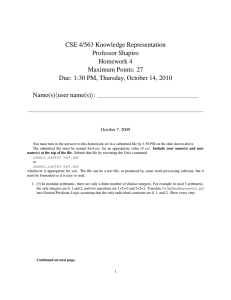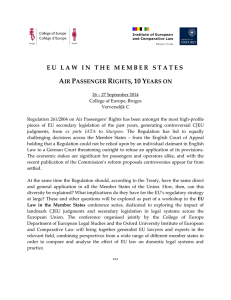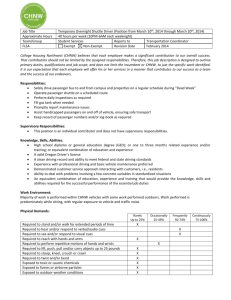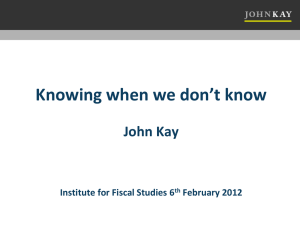nmdps - parties to a crime - accessory
advertisement
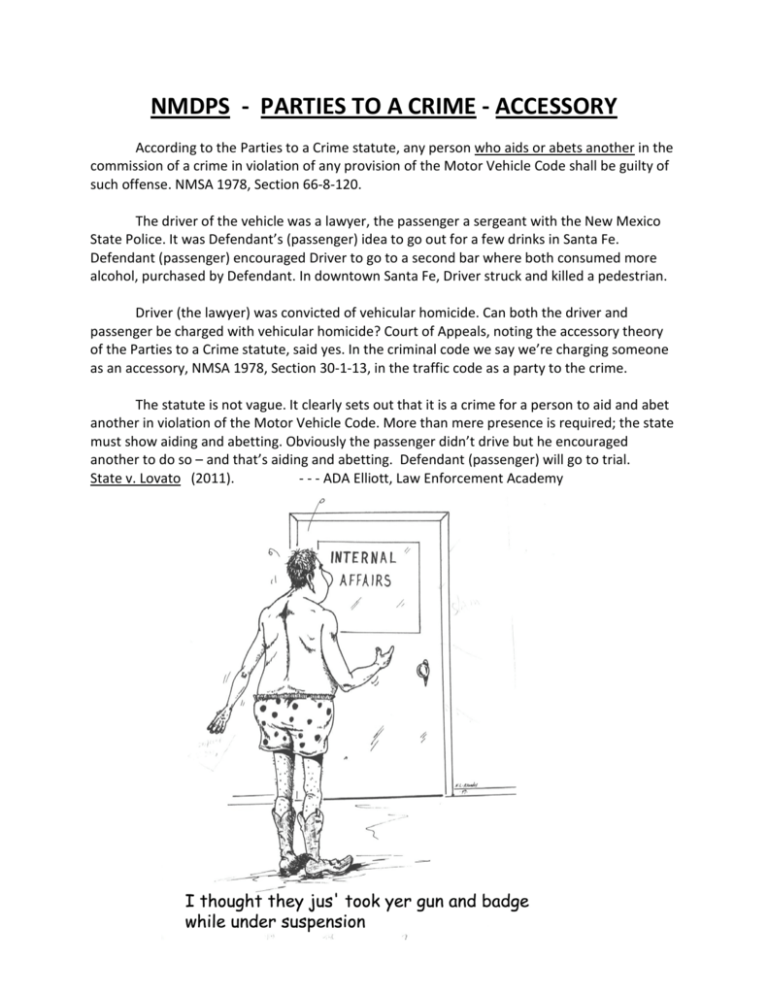
NMDPS - PARTIES TO A CRIME - ACCESSORY According to the Parties to a Crime statute, any person who aids or abets another in the commission of a crime in violation of any provision of the Motor Vehicle Code shall be guilty of such offense. NMSA 1978, Section 66-8-120. The driver of the vehicle was a lawyer, the passenger a sergeant with the New Mexico State Police. It was Defendant’s (passenger) idea to go out for a few drinks in Santa Fe. Defendant (passenger) encouraged Driver to go to a second bar where both consumed more alcohol, purchased by Defendant. In downtown Santa Fe, Driver struck and killed a pedestrian. Driver (the lawyer) was convicted of vehicular homicide. Can both the driver and passenger be charged with vehicular homicide? Court of Appeals, noting the accessory theory of the Parties to a Crime statute, said yes. In the criminal code we say we’re charging someone as an accessory, NMSA 1978, Section 30-1-13, in the traffic code as a party to the crime. The statute is not vague. It clearly sets out that it is a crime for a person to aid and abet another in violation of the Motor Vehicle Code. More than mere presence is required; the state must show aiding and abetting. Obviously the passenger didn’t drive but he encouraged another to do so – and that’s aiding and abetting. Defendant (passenger) will go to trial. State v. Lovato (2011). - - - ADA Elliott, Law Enforcement Academy



